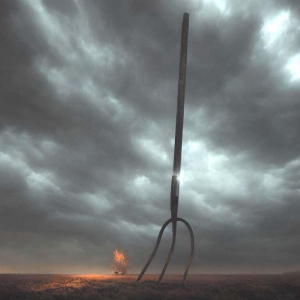![]()
![]() There are eight distinct regions in North Dakota. Region 6, located in south central North Dakota, is comprised of Barnes, Dickey, Foster, Griggs, LaMoure, Logan, McIntosh, Stutsman, and Wells Counties. Regional and local leaders from business, arts, education, and various communities were recruited to formulate a roadmap for the development of one site to be the artistic, historical, and cultural representation for the nine counties. The stakeholder group came together and met online for over a year to plan the fourth statewide Arts Across the Prairie project.
There are eight distinct regions in North Dakota. Region 6, located in south central North Dakota, is comprised of Barnes, Dickey, Foster, Griggs, LaMoure, Logan, McIntosh, Stutsman, and Wells Counties. Regional and local leaders from business, arts, education, and various communities were recruited to formulate a roadmap for the development of one site to be the artistic, historical, and cultural representation for the nine counties. The stakeholder group came together and met online for over a year to plan the fourth statewide Arts Across the Prairie project.
Current Status: Artist James Culleton is researching and finalizing the design.
Artist
James Culleton is a Canadian contemporary multimedia artist and designer  based in Winnipeg, Manitoba. He specializes in drawing, painting, and large scale sculpture. His work has been exhibited across Canada and into the United States.
based in Winnipeg, Manitoba. He specializes in drawing, painting, and large scale sculpture. His work has been exhibited across Canada and into the United States.
“My approach to creating public art is about understanding a place’s vernacular and empathizing with its people. Ultimately, the work becomes part of the story of the community in which it is placed and great places have great stories. Every work of public art starts with researching the place where the art will be situated and also by studying the community. Public art should be broad enough to have multiple interpretations and be able to stimulate a dialogue while withstanding scrutiny.
"My current practice includes many mediums such as mural painting, sculptural waterjet-cut steel and aluminum, snow sculpture, wood, interactive displays involving sound and light (Arduino, RasPi), as well as building using found objects and recycled materials. I enjoy it when work pushes my process in new directions and also like to consider materials that have significance to the area. I enjoy teaming up with the community to brainstorm and problem solve the best solutions for the people and enjoy leading large teams to execute big projects. "
Proposed Design
 James Culleton presented several renderings to the Selection Committee. They were drawn to imagery inspired by North Dakota's early inhabitants, including Native Americans and immigrants, who lived off the rich soil and area wildlife. For example, one rendering in Culleton's proposal showed the design of a pitchfork that he said "represents determination, what can be achieved by individual hard work, and also the belief in new opportunities — all of which the early people of North Dakota embraced.”
James Culleton presented several renderings to the Selection Committee. They were drawn to imagery inspired by North Dakota's early inhabitants, including Native Americans and immigrants, who lived off the rich soil and area wildlife. For example, one rendering in Culleton's proposal showed the design of a pitchfork that he said "represents determination, what can be achieved by individual hard work, and also the belief in new opportunities — all of which the early people of North Dakota embraced.”
As Culleton was preparing his submission for this project, he said, "I imagined the ever-changing prairie, whether that was receding glaciers, birds and animals migrating, or the nomadic people and immigrants on the move. To me the 'movement' was not only physical but also very much about the passage of time."
*Final design to be determined.
Cultural Heritage
After considerable discussion around the history, people, and land, the stakeholder group settled on “Flyways, Byways, and Waterways” as a way to encapsulate the unique aspects of Region 6. Movement, whether of wildlife, peoples, wind, or water, is a common denominator.
The land, part of what is now known as North Dakota, was once largely covered by glaciers. These massive ice sheets sculpted the landscape, creating hills, potholes, sloughs, and rivers, leaving fertile soil deposits behind as they receded. This area is frequently referred to as the “Prairie Potholes Region” after the numerous small water bodies that dot the landscape.
Described as one of the world’s most important wetland regions, this part of the Great Plains provides ideal habitat for a wide variety of wildlife including bison, pronghorn, and white-tail deer. As part of the Central Flyway Migration Corridor, during the spring and fall, the state is home to more than 50% of North America’s migratory waterfowl. The population of more than 400 different species is dependent on the potholes and abundant prairie grasses for breeding and feeding. Rivers within Region 6, including the James, Sheyenne, and Maple, along with Pipestem Creek and several other smaller tributaries and streams, provide habitat and nourish growth.
Ancient indigenous burial mounds and other traces attest to long-standing human presence. It is estimated that the first inhabitants followed the herds of wooly mammoth and giant bison as early as 10,000 B.C. Native tribes first interacted with Europeans with the arrival of French trappers in the mid 1700’s. Nomadic Plains Indians called the prairie pothole region the “Center of the Earth”.
Early explorers like Lewis and Clark, sent by U.S. President Thomas Jefferson to map the western half of the continent, arrived in the Dakota Territories in 1804. The 1860s saw the expansion of the Railroad and Homestead Acts, which attracted large numbers of settlers to the territory. Conflicts with Northern Plains tribes ended with a reservation system and forced assimilation of native peoples.
The 1862 Homestead Act served as a catalyst for the “Great Dakota Boom”. Reports of boundless hunting and trapping, rich soil for agriculture, and the promise of free land brought waves of settlers. From 1905 to 1920, North Dakota’s population more than tripled with the influx of Northern Europeans, the largest two groups being Scandinavians and Germans from both Germany and Russia. So significant was this foreign immigration that in 1915 over 79% of all North Dakotans were either immigrants or children of immigrants. The legacy of North Dakota’s diverse ethnic settlement history remains in cultural traditions that are found in pockets of the south-central region even today.
Installation Site
The installation will be located on a plot of land on the border of Stutsman and Logan Counties, near Gackle, ND. It's in the midst of prairie potholes on a crest with views of nearby surroundings.
Stakeholders
NDCA Board Member, Lead Contact
- Amy Tichy, NDSU Extension Barnes County
Barnes County
- Gratia Brown, Assistant Professor of Art, Valley City State University; VP of Bridges Arts Council
- Hilde Van Gijssel, Bridges Art Council
- Nick Lee, Arts Administrator, Bridges Arts Council; Principal St. Catherine School
- Tina Sackett, Grants and Contracts Officer, University of North Dakota
Dickey County
- Jodi Bruns, Leadership & Civic Engagement Specialist, NDSU Extension
- Lorraine Ptacek, General Manager/CFO, Kustom Machine, Inc.
Foster County
- Hope Carr, Main Street Investor, Business Owner
Griggs County
Logan County
- Carmen Rath Wald, Former county extension agent, Tri-County German-Russian Tourism
LaMoure County
- Emily Ptacek, Marketing/Quality Control, Kustom Machine, Inc.
McIntosh County
- Marvel Gross, Ashley Arts Council; Tri County German-Russian Tourism Alliance
Stutsman County
- Cole Carpenter, Director of Education & Exhibitions, The Arts Center in Jamestown
Wells County
- Laurel Wentz
Sponsors
The statewide Arts Across the Prairie: Placemaking in Rural North Dakota program is a collaboration with North Dakota Department of Transportation, North Dakota Commerce and Tourism, and the State Legislature. NDCA is working with Bridges Arts Council to facilitate the Region 6 project.
Nearby Attractions
Coming soon
Timeline
Coming soon
